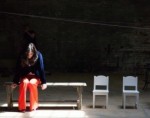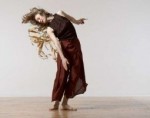Notes from Two Days with Suzanne Carbonneau
by Kirsten Kaschock
SATURDAY
Lisa introduces SC.
Introductions of us to her…
Anna intro Jonathan Stein
Jonathan intro Julie Diana
Julie intro Megan Bridge
Megan intro Beau Hancock
Beau intro Carolyn Merrick
Carolyn intro Annie Wilson
Annie intro Amelia Longo
Amelia intro Kirsten Kaschock
Kirsten intro Lynn Brooks (John Durang)
Lynn intro Peter Price
SC wrote for the Washington Post for 17 years.
Looking at long form writing—the “think piece.”
What’s missing in dance writing?
History
Cultural context
Big statements
Basic knowledge base
Fun
Lacking artistry
Ideas
Dance writing – uncovered by local media
How the voice of authority in dance pieces (evaluation)
Opinion - I voice
Space for dance writing
Multiple takes on a piece
Duchamp—the process the artist begins and the spectator completes (a transaction). As writers we take a more active role in that transaction. We are dialoguing—not PASSIVE. But drop your preconceptions to make that transaction honest.
How and Why rather than “good” and “bad.” Why does this exist here and now? Why do we care about this piece? What we have seen?
“We all have our ‘things’ that we have to get out of the way. I didn’t like the polkadots (in tango).”
Very few performances will change your life. Don’t punish the artists because they didn’t make one.
Writing bids us to engage more deeply. (Lynn—Chouinard)
“Two hours I’ll never get back.” No. That’s your job. The artists don’t owe you anything other than showing you their work.
Reviewing Susan Sontag’s essay—questions of elitism, authority, and tone. Including opera as a basic reference.
Think piece—with or without a dance piece to anchor
Cultural trends
Political
Race/class/gender/(age) nexus
Aesthetic issues
Geography (Philadelphia)
Artist’s profile
Institutions
Anna’s question—trajectory of the written piece?
Copious notes and then connect the dots. (Megan)
Connecting six snapshots with Buddhism (Lisa)
Outline?
Writing after the performance (Annie)
SC—“I’m not a very efficient writer myself”
Watch Chipaumire piece—11 minute solo: Kaffir
Generating ideas of subject matter.
Pennsylvania Ballet – Ratmansky’s Jeu de Cartes to Stravinsky
Jonah Bokaer… box piece…
Amelia’s questions
1. Reading list (Lisa will scan and upload)
2. What kind of idea is too big?
Think of a piece you want to write about—brainstorm a think piece.
SUNDAY
Intro of people who weren’t here yesterday.
Review of yesterday’s actions.
Megan--read her research on “Process Art” (in the visual arts world) in which she talks about decomposition, ritual (art as recreating religious-type micro-communities and practice). Process- and experimental. (Cage: experimental means the product is unknown).
Commentary--What do you want to happen from the pieces? (SC) Sharing research is not necessarily narcissistic, you can take Sontag and go general and specific (Lisa and SC). Is the product of process art a contradiction or an impossibility? How do you do it? Mine the visual arts for more background (Jonathan Stein). If you view this as a public service project... be ruthless about NOT being “insidery”... keep your audience in mind throughout the piece (what does this mean to people outside this room and in performance how does the audience hook into these remnants of process? What do they get out of it?-- The Book of Tea-- SC. Lewis Hyde’s The Gift.)
Kirsten-- dead girl piece. Morality in content.
Commentary-- raising questions. It is all in the tone. Being attracted to these images: archetypal. “Dead girls have always been popular” -Jonathan Stein. Goth, revival of symbolist painters. Shaming (Jim Rutter). Do people get critiques? (John Jasperse--SC).
Lisa-- sectional on impermanence. Ohno, Bausch, Brown.
Commentary-- Expand last section. Amelia wonders about the movement from the numbered sections--one to another. SC says to look at how you start each section. Pare down but imbue with meaning (SC). Haiku-like (Kirsten). Questions from Ellen and Carolyn about the layers and interpretation of Viktor. Bigger or smaller? Both says SC.
Beau-- The Martha Graham Cracker piece.
Commentary-- How are you going to bring in the Philly connection and maintain the artist description? Relationship to other drag performers? Relationship to Graham (Jonathan Stein). SC--profile as a platform for cultural examination. Look at Mark Dendy, maybe The Queen’s Throat (Koestenbaum). Liking the ambition of the piece. Think hard about the language. Here’s the joy, Amelia!
[notes from this point on are Lisa’s]
The essay emerges from a question – comes from being intrigued by something and following some trails. Then you make some connections. “I wait until I find the thing that’s key for me.” (SC)
How to narrow a focus? Start thinking for yourself of words and the subject, start doing some research, then there’s a moment when you know “this is what it’s all about.” Kill your darlings. Start again.
Follow the resonances through, the concentric circles and just stick with that.
The idea has some edges, find where the edges are. “This is what I am doing today. I can do more tomorrow, this is it for now.”
Peter – post-performance scene at fidget.
Commentary -- Benjamin>Adorno, in a nesting structure. Spaces expanding to observe the writer’s voice. Acknowledging writer’s process. How the mind works. Hyper consciousness about the act of looking and thinking.
Carolyn — Shen Wei Folding.
Commentary – Exotic presence & erotic slow mo. Distance of proscenium seating vs. hypnotic envelopment. Denby intoxication. No beginning no end>trance>tango. Connected to ‘therapy.’ Simplicity and complexity. Bodies as malleable architecture. Near and far, bridging space. The piece bridges time. Flow of time & physical flow. Always interesting to think about why a piece is at the top of
your list.
20 ideas, let your imagination go, fall all over the place, end up writing a piece about polishing stones.
All these things we take for granted: “creating a world” – what are we really talking about?
Wrapping Up. Polymer Persons essay.
“Many times when I come across something I appreciate – how did they achieve the effects? Make it work in the way it did? What was the style?” (SC)
Examine structure>paragraphs>sentences>words
Joan Didion typing other’s entire novels so she could feel what it feels like to write like that. Down to the word.
Keep a file of writing you like and study it. Steal its effects.
Things that started here should continue.
Language choices (general/accessible?). Be careful not to use a word to show off.
Styles changing from piece to piece
SC –I need a deadline because it’s never done and I’m never happy.
Bouncing ideas off a "board.” Rich conversation around the subject you’re writing on.
With editors: listen first. Live with it. Then have the exchange. You want to protect your voice. Don’t hang onto something just because you love it.
Editor asking questions rather than making changes. Job is not to “re-choreograph the work." Within what’s there how can you imaginatively give yourself over to that? Empathetically getting inside the writing to give cogent supportive advice. Not re-imagining.
Save them from themselves too.
Look at content, style, word choice, structure.
Sensitivity and ruthlessness comes with practice.
Give yourself permission to experiment. Even if it is a total failure, you’ve done something.
And write something every day.
By Kirsten Kaschock
May 31, 2012








